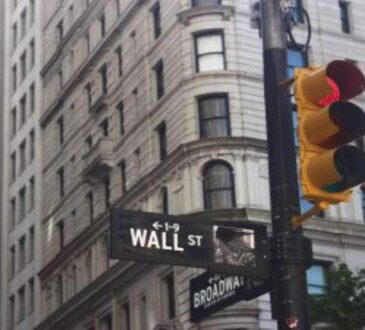

Most people know Mark Cuban as the billionaire entrepreneur who appears on the ABC reality television series “Shark Tank.” Sports fans may know him as the former owner of the Dallas Mavericks.
But on Wall Street, Cuban is famous for protecting a $1.4 billion stake from the 2000 stock market crash with a savvy options trade. “The whole market cratered and I was protected,” Cuban told Howard Stern in 2013.
Don’t miss
Here’s how this investing legend avoided disaster when the dot-com bubble burst.
Cuban’s collar trade
In 1999, Cuban and his business partner Todd Wagner decided to sell their online streaming company, Broadcast.com, to internet giant Yahoo. The firm was acquired for $5.7 billion, and since Cuban held roughly one-third of the company, he was instantly a billionaire. The Yahoo stock he owned was worth roughly $1.4 billion at the time, according to Business Insider.
There was only one problem — Yahoo had not paid Cuban and Wagner in cash. Instead, the deal involved Yahoo stock, which was surging while the mania surrounding tech companies grew. It seems Cuban was spooked by the inflated valuations, predicted the bubble would burst at some point, and decided to take steps to protect his payout.
“I did a hedge,” Cuban told Stern. “I sold calls, bought puts, so I protected my stock … It went up in value some more, and went up to where my hedge was and cashed me out.”
This trade is known as a “collar” in the investment industry. By selling calls, an investor gives up the upside in a stock beyond a certain point and by buying puts they can place a limit on their losses if the stock drops.
In other words, Cuban effectively locked in the value of his Yahoo stock at the time. Six weeks later, he says, the market crashed.
Read more: ‘It’s not taxed at all’: Warren Buffett shares the ‘best investment’ you can make when battling rising costs — take advantage today
“They called it one of the top ten trades of all time on Wall Street,” he said, smiling.
Cuban’s move highlights how wealthy investors think about downside risk. Sophisticated investors take action to protect their wealth, just in case the economic cycle turns ugly. With that in mind, here are three ways regular investors can also protect their wealth if the market crashes in the near-term.
Keep cash and stay invested
Cash and cash equivalents (savings, checking and money market accounts, and short-term investments) are thought to provide liquidity and safety. A robust emergency fund protects you from having to sell your investments at a possible loss when the market is struggling. According to the U.S. Bank, a general rule of thumb is that cash and cash equivalents should comprise between 2% and 10% of your portfolio.
Bonds
For several years, fixed income securities were the most boring asset class on the market. The Federal Reserve held benchmark interest rates at a historic low, nearly zero, after the Great Financial Crisis of 2008. That changed in March 2022 as the Fed started raising rates to fight inflation. Now the benchmark rate is at 5.33%.
A 10-year government treasury bond now offers a 4.3% yield. This means you can lock in a fixed return for 10 years with very little risk. Bonds are yet again a safe haven asset worthy of attention.
Gold
Economists such as Peter Shiff and Alan Greenspan have always considered gold a hedge against inflation and economic chaos. While currencies can lose value, tangible assets like precious metals are thought of as stores of value and safe havens.
Analysis by investment firm Sprott says that gold has appreciated by an average of 13.98% during seven crisis periods since 2007 – 2009, while the S&P 500 Total Return Index has lost an average of 9.6% during these periods.
Holding a small gold position could add a buffer to your portfolio.
What to read next
This article provides information only and should not be construed as advice. It is provided without warranty of any kind.

